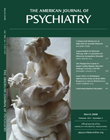The exponential growth of research and clinical experience regarding posttraumatic stress disorder (PTSD) since its inclusion as a diagnosis in DSM-III 27 years ago has made it increasingly difficult to keep pace with advances in knowledge about the disorder. The three highly respected editors of this book identified the need for a comprehensive textbook on PTSD and brought together a group of 60 strong contributors, predominantly from the United States (with one or two well chosen exceptions), to produce a highly readable volume that will undoubtedly be of great use to individuals specializing in traumatic stress.
The chapters detailing the historical background of the disorder set the scene and the chapters concerning psychological theories, epidemiology, and neurobiological theories provide up-to-date discussions of current knowledge in these areas. One great strength of the book is the detailed consideration of memory in PTSD, trauma-induced dissociation, and gene-environment interactions. Work in these areas is increasing and our knowledge is improving, and the chapters provide readers with an opportunity to consolidate their knowledge in these important areas that are not fully covered in many other texts.
The section on prevention and treatment of posttraumatic stress disorder comprehensively reviews the evidence for interventions and importantly includes a chapter on cultural issues and trauma, which are often forgotten.
The final section of the book, “Uncharted Territory,” provides a helpful overview of PTSD and the law. Perhaps not surprisingly, the focus is on U.S. legislation, although many of the issues can be easily translated to other countries, particularly the more developed ones. The contributing authors sensibly write, “Healthy skepticism must be tempered with an ethical obligation to deal with PTSD claimants in an honest and empathic manner.” Many texts do not consider emerging and novel treatments that have not been subjected to extensive evaluation but are in some cases already widely used. It is very important that such approaches are considered and fairly assessed. The chapter dedicated to emerging treatments for PTSD provides a useful review and helpfully recommends capitalizing on social support because of its association with recovery. Given the limited evidence for blanket early intervention, the chapter on public mental health interventions provides some excellent points, with a focus on providing for basic needs and triage. The final chapter provides a fitting end to the book with a synthesis of key questions and an agenda for future research.
Overall this is a very good overview of the traumatic stress field and a volume I am very pleased to have on my bookshelf. I suspect that others will feel the same.

